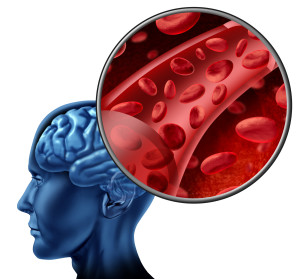My Brain Needs Oxygen—What Can I Do?
by Steve Riggs, BS, RRT-NPS
 How can I get more oxygen into my brain? We all know that our bodies need some attention in order to grow and be healthy. We know that we need a good diet and exercise. But what about our brain? What does it need to be able to grow, to heal, and to learn in the best way it can? What are the elements of balance that will affect brain function and recovery?
How can I get more oxygen into my brain? We all know that our bodies need some attention in order to grow and be healthy. We know that we need a good diet and exercise. But what about our brain? What does it need to be able to grow, to heal, and to learn in the best way it can? What are the elements of balance that will affect brain function and recovery?
A good diet is a great beginning. Our brain has a lot of structure just like our other body parts, and it needs to be fed well too. But there are other things that our brain needs that are less talked about. If we are going to intentionally care for our brain, we need to know about body balance in ways that we don’t often hear about. Specifically, we need to do as many things as possible to get the best circulation of blood to the brain that we can. This is important because our blood carries the oxygen to our brain, and oxygen is vital to brain growth and healing. Oxygenating the brain well is required to promote brain healing and brain use. Proper brain function requires a critical balance of a) correct breathing for oxygenation b) correct carbon dioxide and nitric oxide levels for circulation and c) a program of brain activities or exercises for growth stimulation.
When we go to the doctor they often clip a piece of equipment on our finger called a pulse oximeter. It gives them a general idea of how much oxygen is in our blood. It is so important that it is often referred to as the fifth vital sign. (Vital signs are body temperature, heart rate, breathing rate, blood pressure, and now oxygen saturation.) The pulse oximeter tells them how well your blood cells are saturated with oxygen.
To really understand the importance of this fifth vital sign, consider this:
- The brain uses about three times as much oxygen as muscles in the body do.
- Brain cells are very sensitive to decreases in oxygen levels and don’t survive or function well very long without it.
- The brain is made up of very special cells called neurons, and each of them can do the job of any of the other neurons in the brain. That process gives us the ability to relearn most functions using different parts of the brain. So if we have an injury or a sick part of our brain, we can teach our brain to restructure and control body parts and function with other areas of the brain. That is called brain plasticity.
So how do we increase oxygen and circulation in the brain? One of the easiest ways to understand is how we physically breathe. We were truly meant to breathe easily and without thought; through our noses, mouth closed, and with what is called belly breathing, or diaphragmatic breathing. We have structures in our heads called sinuses, oral cavities, and the upper parts of our lung structure that hold a certain level of chemical control agents, such as carbon dioxide and nitric oxide, that help control blood vessel tone and circulation. When we breathe normally and deeply into our belly, we move air and oxygen down to areas of our lungs where most of the circulation of blood is. This is where most oxygen and carbon dioxide exchange takes place. If we don’t learn to breathe naturally with our diaphragm muscle, we do not get the proper amount of oxygen into our blood to be carried to our brain and body parts. If we breathe through our mouth, we do not rebreathe the stored carbon dioxide and nitric oxide that help circulate blood to the brain in order to oxygenate brain cells. Remember, the carbon dioxide and nitric oxide open up blood vessels in the brain so we can get proper oxygen levels in our brain. Nitric oxide helps dilate blood vessels in our lungs so that we can get good circulation there for exchange of oxygen and carbon dioxide.
Although some information on this subject does not seem to get taught in science or in medicine, there is a lot of literature that supports these thoughts 100%. There is also adequate information on the adverse effects of chronic or intermittent low levels of oxygen saturation on development, behavior, and academic achievement that has been reported in many well-designed and controlled studies.
Now what were those simple things that must be practiced for increasing oxygen to the brain? Here they are: 1) Breathe easily and normally with your belly in a relaxed way. 2) Breathe through your nose under normal conditions and not your mouth. 3) Take short walks throughout the day. Short walks will increase your circulation and increase oxygen to your brain, whereas while forced walks or runs may be good for you too, they also cause your muscles to absorb much of the oxygen in your system, and that hinders increasing the oxygen being carried to your brain.
Finger Pulse Oximeter available at NACD Store.
Reprinted by permission of The NACD Foundation, Volume 25 No. 5, 2012 ©NACD
Please note: This page is for educational and informational purposes only and may not be construed as medical advice. The information is not intended to replace medical advice offered by physicians.





